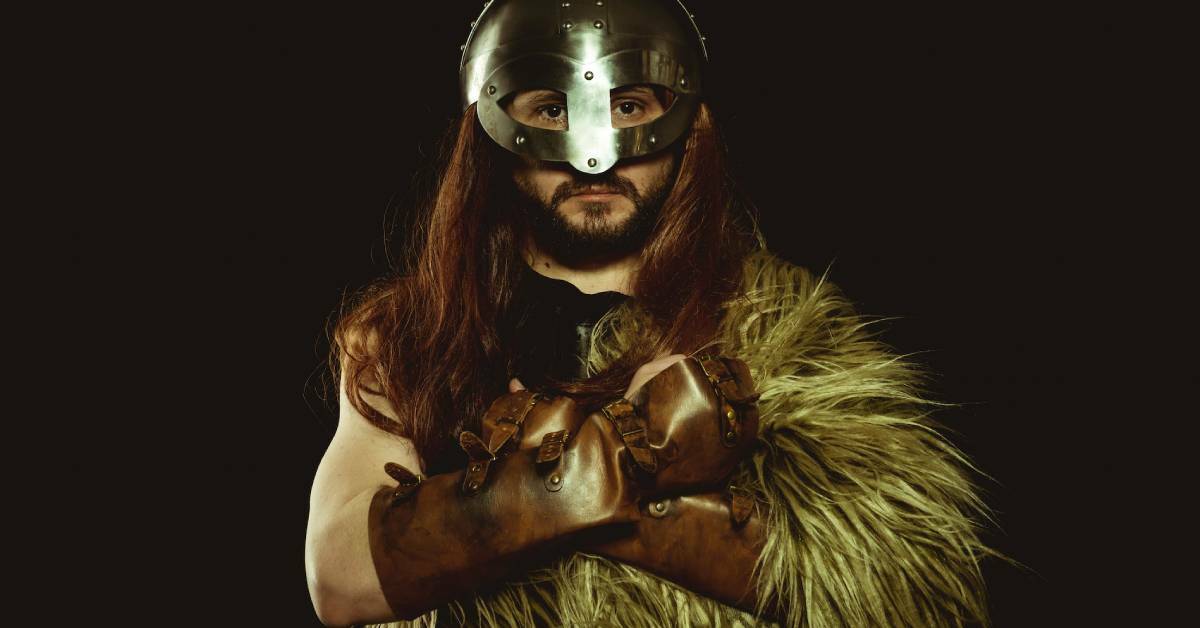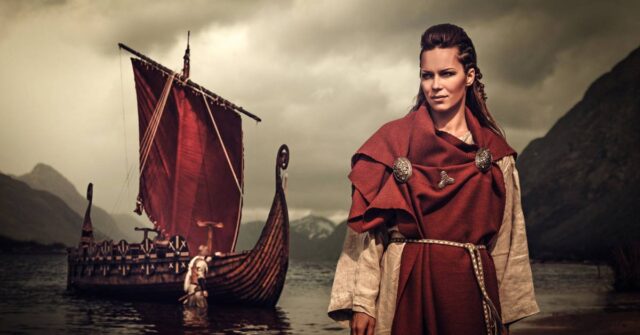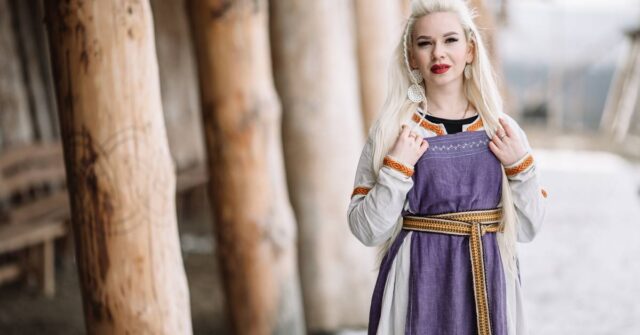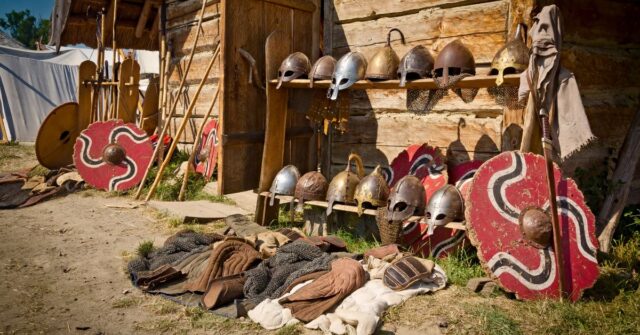The role of fur in Viking clothing transcends its practical use as a source of warmth during harsh Scandinavian winters. The fur, with its association with hunting and trade, embodied social status, wealth, and cultural values.
This article delves into the significance of fur in Viking clothing, the sources and types of fur used, and its modern interpretations.
Introduction to Viking Clothing
Viking clothing reflects the ingenuity and adaptability of the people who lived in the harsh climates of Scandinavia during the Viking Age (c. 790–1100 AD). It was functional, providing warmth and protection, and carried social and symbolic meanings.
The Importance of Clothing in Viking Culture
Clothing in Viking culture was more than mere attire. It was a symbol of one’s status, profession, and wealth. The quality and types of materials used, including fur, could indicate the wearer’s social standing and occupation.
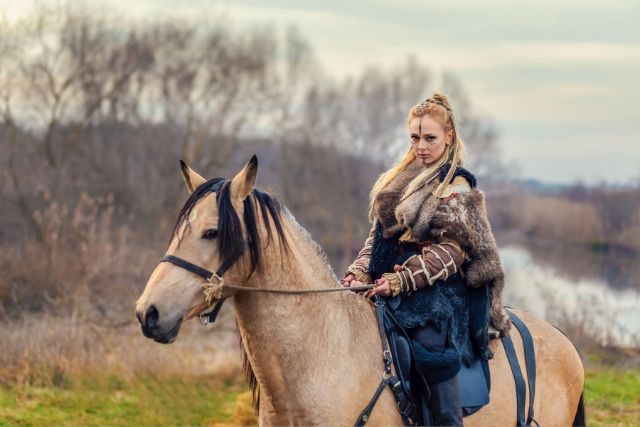
Common Materials Used in Viking Clothing
Viking clothing was typically made from readily available materials such as wool, linen, and leather. However, fur, due to its excellent insulation properties, was highly valued and extensively used in making winter garments.
The Significance of Fur in Viking Clothing
Fur was integral to Viking clothing. Its importance was both practical and symbolic, providing insulation from the cold and serving as a status symbol within Viking societies.
The Practical Importance of Fur
Fur, with its excellent thermal properties, was crucial in protecting the Vikings from the severe cold. It was used in various types of clothing, including cloaks, boots, and mittens.
Thermal Insulation
Fur’s thermal insulation properties made it an ideal material for clothing, especially in winter. It could retain heat efficiently, providing the necessary warmth to endure the freezing Nordic temperatures.
Durability and Protection
Besides warmth, fur was highly valued for its durability. It could withstand the wear and tear of daily life in a challenging environment, offering protection from the elements and demanding tasks.
Fur in Viking Footwear
Fur was commonly used in Viking footwear. Fur-lined boots provided insulation from the cold ground, and the durability of fur made the boots long-lasting.
Symbolic Importance of Fur
The use of fur also carried significant symbolic meanings in Viking society. It was often associated with status and religious practices.
Fur as a Status Symbol
Access to certain types of fur, especially those from rare or exotic animals, was indicative of a person’s wealth and status. The more expensive and unique the fur, the higher the status it conferred to its wearer.
Religious and Ritualistic Uses of Fur
Fur also had religious and ritualistic importance. It was sometimes used in ceremonies and offerings, reflecting the spiritual beliefs of the Vikings.
Sources of Fur: Viking Hunting and Trading
The Vikings obtained fur by hunting local fauna and through trade. Fur was a significant commodity in the Viking trade, both within and beyond Scandinavia.
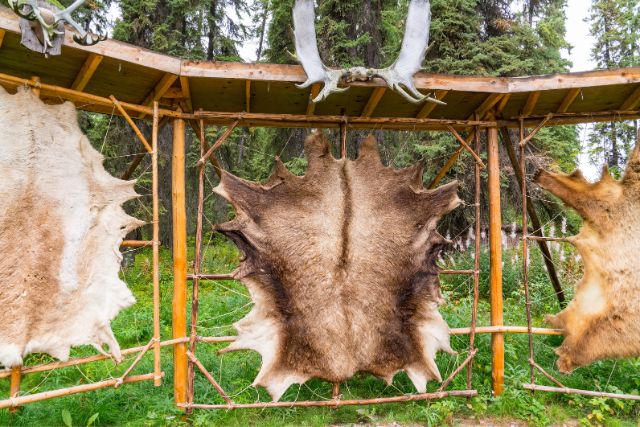
Indigenous Animals Used for Fur
Fur from indigenous animals such as bears, foxes, and marten was commonly used. The availability of these animals in the Scandinavian region made their fur accessible for clothing.
Trade Routes and Exotic Furs
Viking trade routes extended as far as North America and the Middle East. These trade networks allowed access to furs from animals not indigenous to Scandinavia, enhancing the variety and quality of fur available for clothing.
Types of Fur in Viking Clothing
The Vikings used a variety of fur types in their clothing, each with its unique characteristics and uses.
Fur from Land Animals
Fur from land animals like foxes, bears, and martens was commonly used. Each of these provided different levels of warmth, durability, and status.
Fur from Marine Animals
Fur from marine animals, particularly seals, and otters, was also used. These were especially valued for their water-resistant properties.
Construction and Maintenance of Viking Fur Clothing
The process of transforming fur into clothing was labor-intensive, requiring specialized skills and knowledge. Furthermore, maintaining fur clothing was a task of utmost importance to retain its qualities.
Preparation of Fur: From Animal to Apparel
The preparation of fur involved several steps, including skinning, curing, tanning, and finally tailoring. Each stage required precision and expertise to ensure the highest quality fur for clothing.
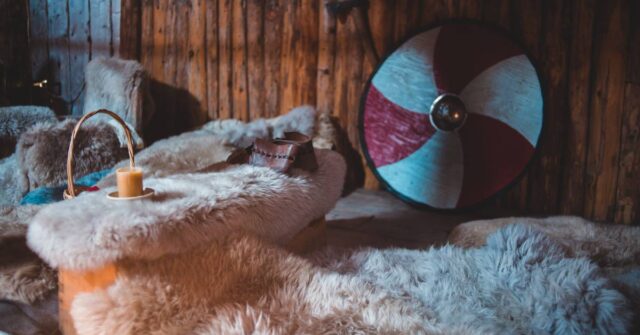
Techniques for Fur Clothing Construction
Building clothing from fur required a range of techniques, from stitching and piecing to lining and embellishment. These techniques varied depending on the type of fur used and the specific garment being made.
Maintenance and Care of Fur Garments
Maintaining fur garments was crucial for their longevity. Care routines included cleaning, airing, and occasionally repairing the fur to preserve its insulating properties and appearance.
Fur in Viking Clothing: Depictions in Art and Literature
The presence of fur in Viking clothing is evident in historical sources, such as artwork, literary texts, and archaeological finds, providing valuable insights into its use and significance.
Artistic Representations of Fur Clothing
Fur clothing features prominently in Viking art. Depictions in sculpture, carvings, and textile art reveal the types of fur garments worn and their status within Viking culture.
Literary Mentions of Fur in Viking Culture
Viking sagas and other literature often mention fur clothing, sometimes indicating the type of fur and its significance. Such literary references help build a nuanced understanding of the role of fur in Viking clothing.
Modern Interpretations and Reconstructions of Viking Fur Clothing
Modern reenactments and historical interpretations have recreated Viking fur clothing to understand better its construction, use, and cultural significance. However, the accuracy of these reconstructions varies widely.
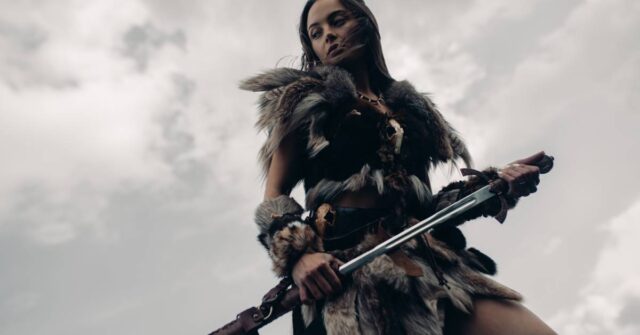
Accuracy of Modern Reconstructions
While some modern reconstructions of Viking fur clothing have been based on rigorous research and archaeological evidence, others may be influenced by popular misconceptions.
Thus, understanding the context and sources is crucial in interpreting these recreations.
Fur in Contemporary Viking Reenactments
In contemporary Viking reenactments, fur often plays a significant role in authentically recreating Viking attire. These reenactments provide valuable insights into how Viking fur clothing may have looked and functioned.
Conclusion: The Legacy of Fur in Viking Clothing
The legacy of fur in Viking clothing persists today, shaping our understanding of Viking culture and lifestyle.
The use of fur, in its various forms and functions, remains an integral part of our perception of the Viking Age, reflecting the resilience and sophistication of Viking society.

